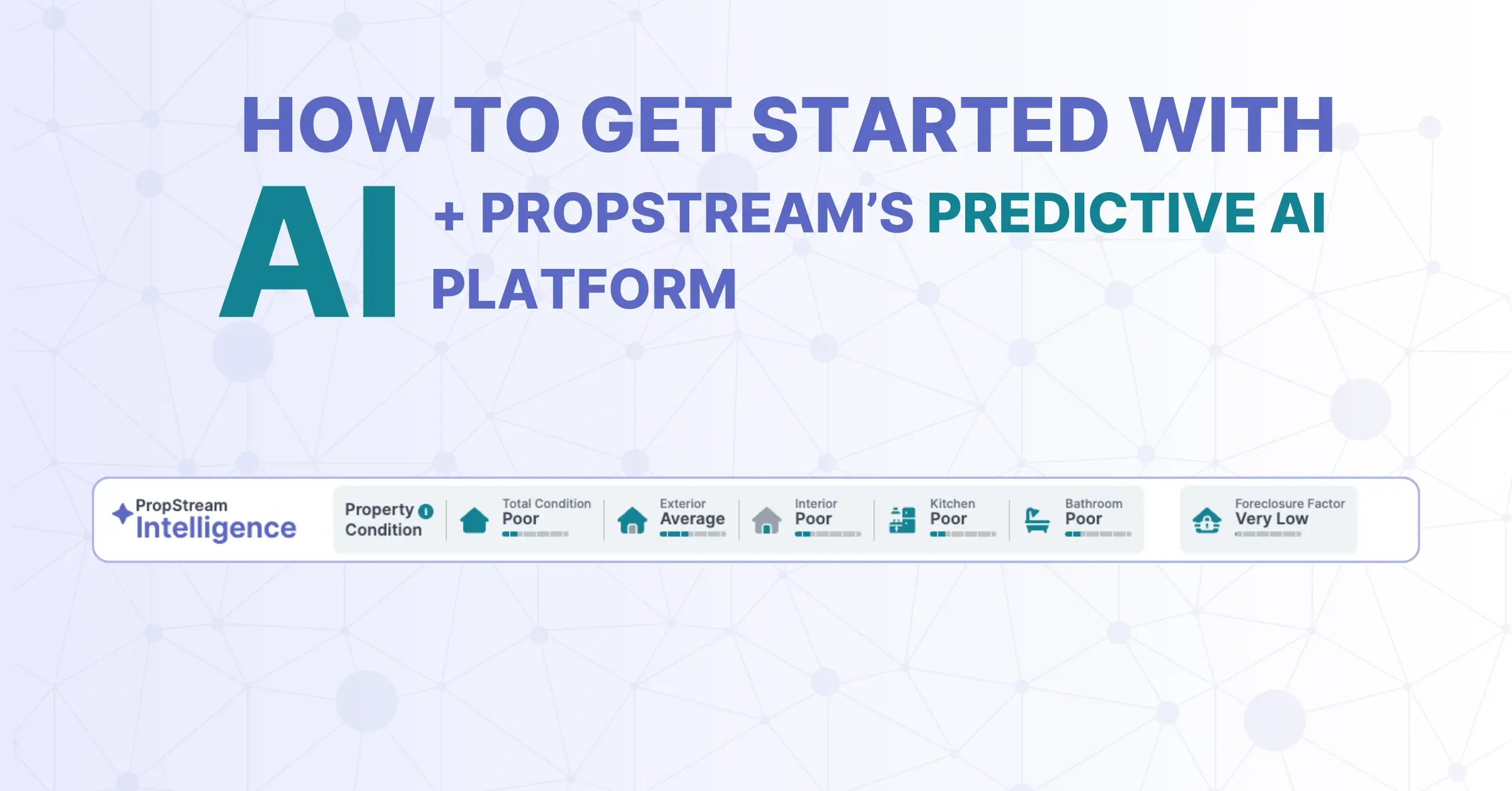Growing a real estate business is challenging in today’s highly competitive market.
However, agents who know how to use real estate data to find high-growth neighborhoods are a few steps ahead of their competition. After all, doing so can help you stay ahead of market trends, attract quality leads, and close more deals.
In this article, you’ll learn how to recognize high-growth neighborhoods, why they’re essential to your business, and how to use real estate data to identify them.
Table of Contents
- What Are High-Growth Neighborhoods?
- Why Focus on Growing Neighborhoods?
- Real Estate Data to Help You Pinpoint Neighborhood Trends
Access Reliable Real Estate Data With PropStream
Key takeaways:
- High-growth neighborhoods are those with rising property values, buyer demand, and economic development.
- To find high-growth neighborhoods, focus on demographic data, population growth, local job markets, average days on market, and historical sales data.
- You can use a tool like PropStream to analyze historical property and sales data, find localized demographic data, uncover market trends with advanced search filters, and generate detailed market reports for clients.
What Are High-Growth Neighborhoods?
“High-growth neighborhoods” aren’t simply areas where the population is growing quickly—although that’s often an identifying marker. Instead, high-growth neighborhoods are those set to experience fast-rising property values, sale prices, buyer demand, and economic development.
You can find lists of the hottest real estate markets online. However, these generally feature big cities where the market is already mature, and finding deals or establishing your brand in these locations can be challenging. Identifying neighborhoods poised for growth may take more research, but it can give you a stronger competitive edge.
Why Focus on Growing Neighborhoods?
Mature markets generally have high agent competition. But high-growth neighborhoods give you room to stake your claim early, find quality leads, and grow your brand fast.
2. It helps you advise investor clientsInvestors are constantly looking for good deals on rental properties, especially those that will appreciate quickly. An agent who knows how to pinpoint high-growth neighborhoods can guide investor clients in the right direction.
3. It helps you guide strategic buyersProfit-minded buyers pay attention to appreciation and expect you to find the best places to increase their property value over time. Helping buyers find properties in high-growth neighborhoods can lead to more satisfaction overall.
Real Estate Data to Help You Pinpoint Neighborhood Trends
Certain markers point to upcoming growth markets.
For example, if an area welcomes an increasing number of popular chains or a large company’s new headquarters, you can guess that nearby property values will rise. The same goes for when new public transportation is built, or an influx of artists appears.
However, keeping your eye on local news isn’t the most efficient way to find growing neighborhoods. Instead, try using big data to look for hidden trends. Then, once you’ve identified a potential high-growth neighborhood, you can do more in-depth research to confirm your ideas.
Here are some data points to use when looking for high-growth neighborhoods:
Historical sales data and property values: Look at the neighborhood’s past and current sales. Are they rising? How much? Compare that growth rate to other local neighborhoods, the city in general, and bigger cities nearby.
Average days on market (DOM): This tells you how quickly properties sell in the neighborhood you’re researching. Check the average DOM over the last several years to see if demand is rising or falling.
New inventory: Are new homes or condos being built in the neighborhood? This can often be a sign of growth.
Job market growth: An increase in job opportunities—especially in high-paying industries—is also a sign of growth. However, if employment rates are lower than in nearby cities, that can be a red flag. Try to find average salary rates, too. If salaries are growing, chances are high that home prices will follow.
Population growth: A growing population often points to an increase in housing demand and, in turn, property values.
Historical rental rates: When buyer demand grows, rental rates often follow. Make sure to do your research, though, as sometimes a hike in rent can result from higher taxes or new regulations. For your investor clients, check for cash flow potential by comparing rental rates to sale prices.
Access Reliable Real Estate Data With PropStream
You can hunt for data on your own using public or private sources, but this takes time, and you may need to pay multiple sources for information. Instead, try using an all-in-one real estate data software to make your search easier and more cost-efficient.
When choosing a data tool, look for one that has a vast data library, pulls from multiple reliable sources, updates its data daily, and offers a variety of search filters to find the information you need. For example, PropStream pulls from the MLS and public recordings to provide up-to-date data on over 155 million properties nationwide. Our platform makes it easy to sift through this data with hundreds of filter combinations.
Here are a few ways to use PropStream to find high-growth neighborhoods:
Analyze historical property data: First, use the draw tool to narrow your search to a particular neighborhood. Then click the "Statistics" tab to look at historical sales data and property values and spot emerging trends.
Access demographic information: Use PropStream’s localized demographic data to assess a neighborhood’s growth potential. Uncover information like:
- Total Population (as well as age ranges within the local population)
- Employment Levels
- Highest Education Received
- Income
- Household Composition
And more!
Utilize filtering options: Is your client buying a property to rent out to a tenant? Are they searching for a potential short-term rental property? Or do they want a home where they can live for several years? PropStream’s search filters allow you to find ideal neighborhoods for your clients based on their unique preferences and needs.
Start using real estate data to find high-growth neighborhoods today. Get started with PropStream’s 7-day free trial!
FAQs on Using Data to Find High-Growth Neighborhoods
How often should I analyze data to stay updated on a neighborhood’s growth?
Real estate trends can change rapidly, so it’s a good idea to analyze data regularly. Reviewing key data points at least on a monthly basis can help you identify emerging trends and high-growth neighborhoods.
How do zoning laws and development plans impact neighborhood growth?
Zoning changes and urban development can directly impact how much and how quickly a neighborhood grows. For example, if a zoning change allows for more residential or commercial development, it can lead to an increase in population density and buyer demand.
Can social media and online reviews help me identify high-growth neighborhoods?
Yes, social media and online reviews can give you a sense of how desirable a neighborhood is or help you advise a buyer client. After using real estate data to identify a high-growth neighborhood, you could look at social media groups and reviews of nearby restaurants or businesses to get a better picture of what life is like there.
What is PropStream?
In your search for real estate data, you may have come across our brand, causing you to wonder, “What is PropStream?” PropStream is a real estate data platform that helps professionals find leads, streamline their outreach and marketing, access property information, and analyze markets. Our vast data sets pull from multiple reliable sources to provide up-to-date information on 160+ million properties. Whether you’re researching a specific property, analyzing a region, or skip tracing a list of leads, PropSteam’s search filters, Lead Lists, and marketing tools can help.
Subscribe to PropStream's Newsletter



